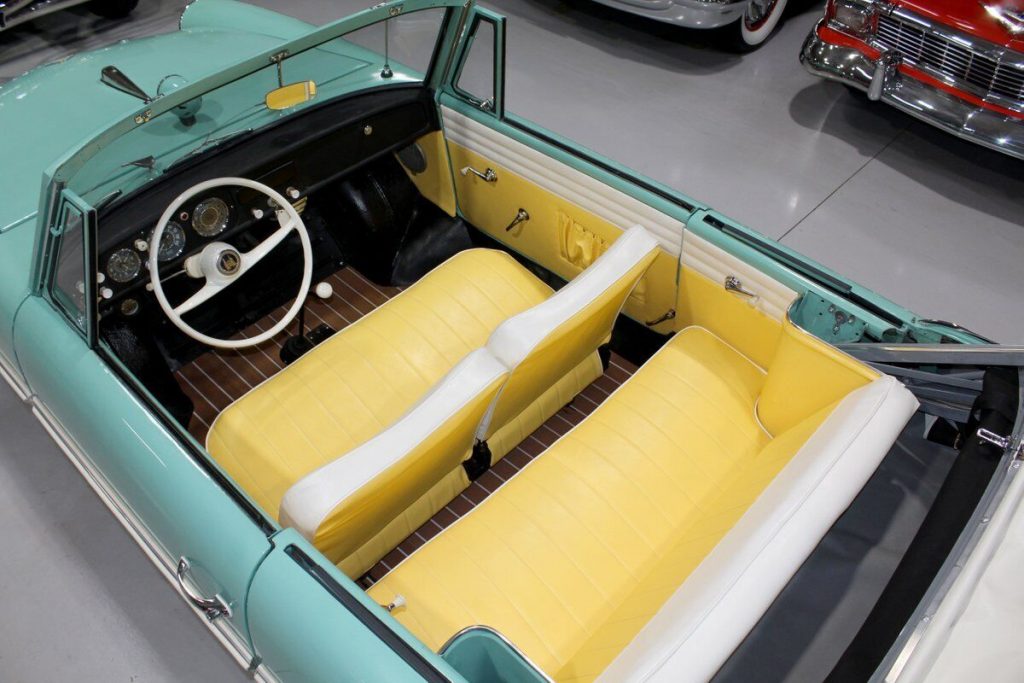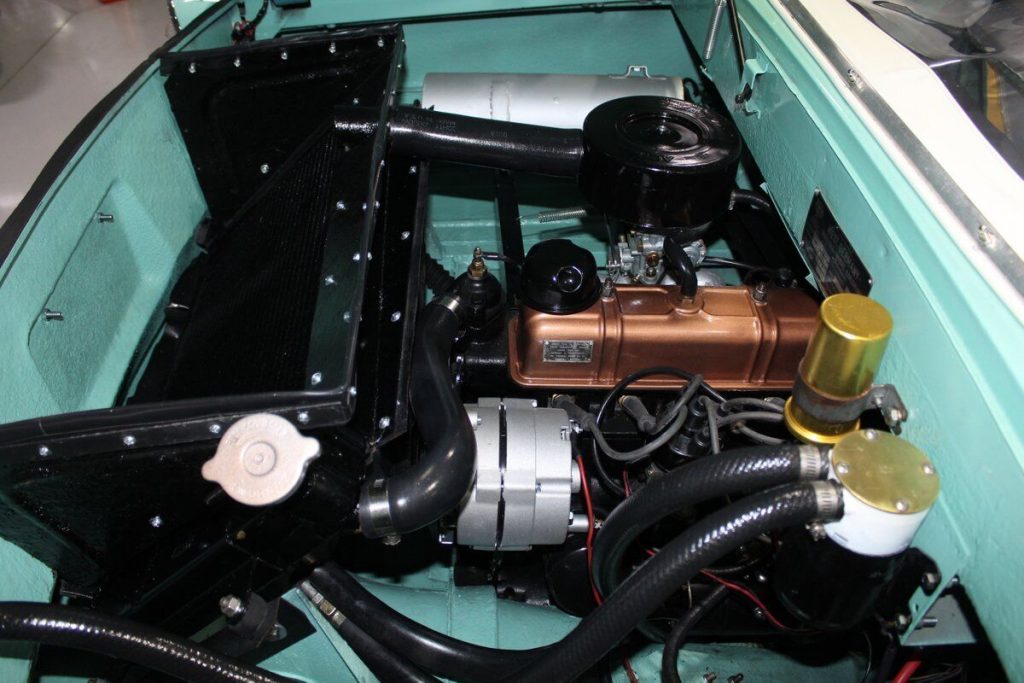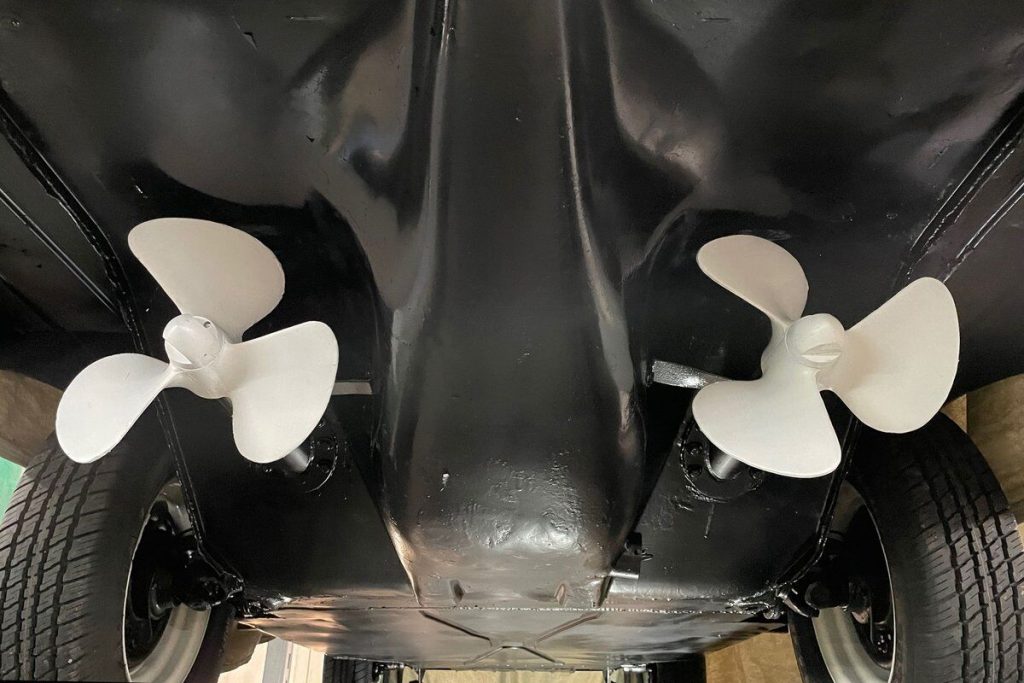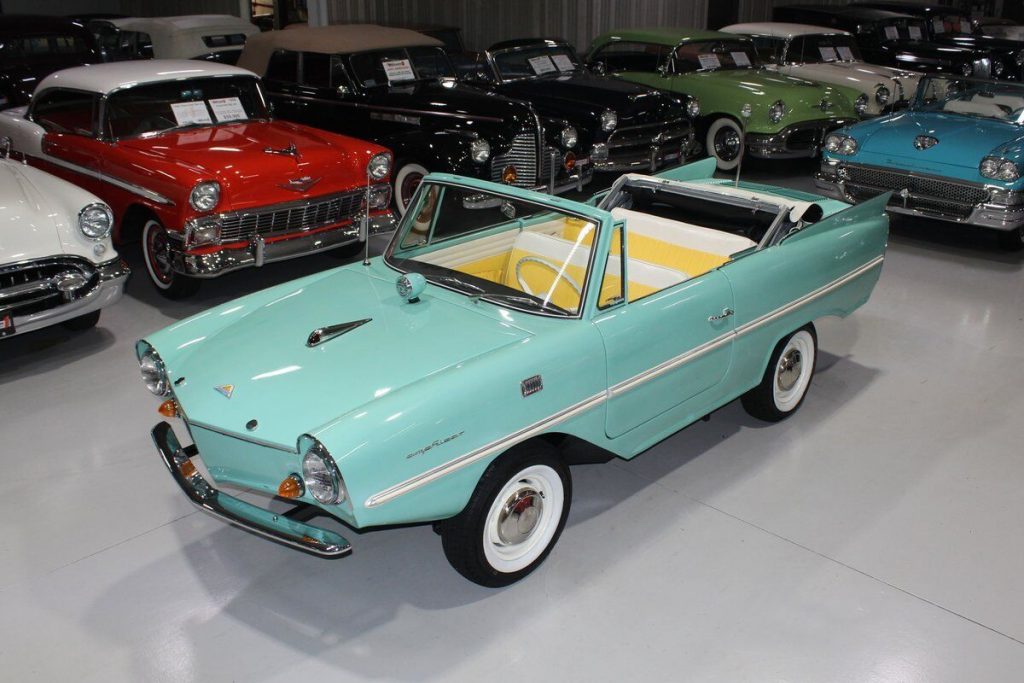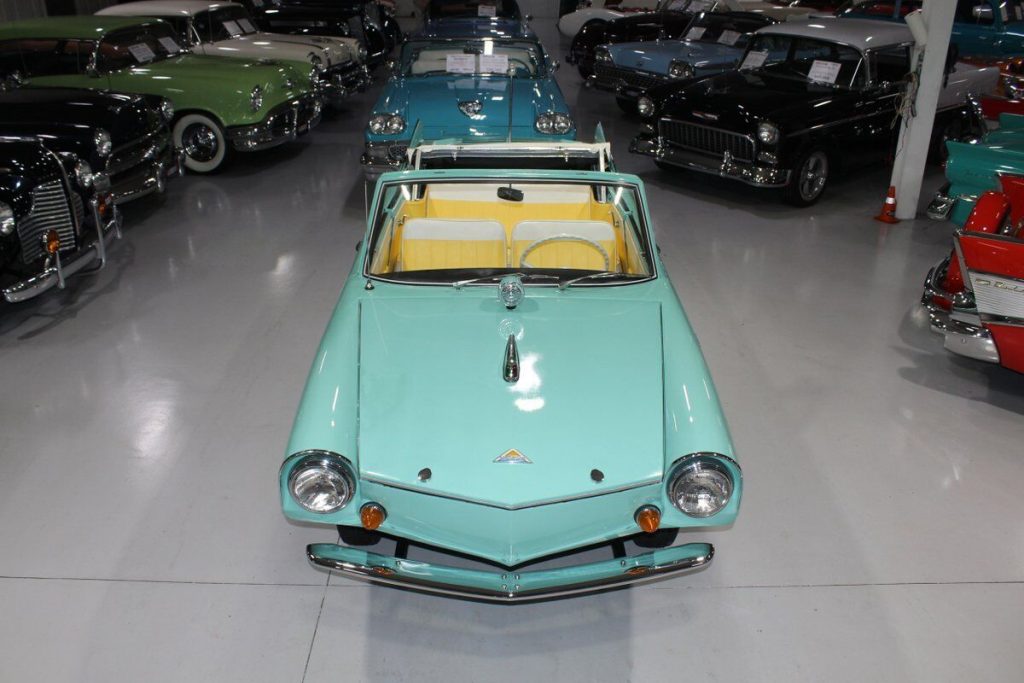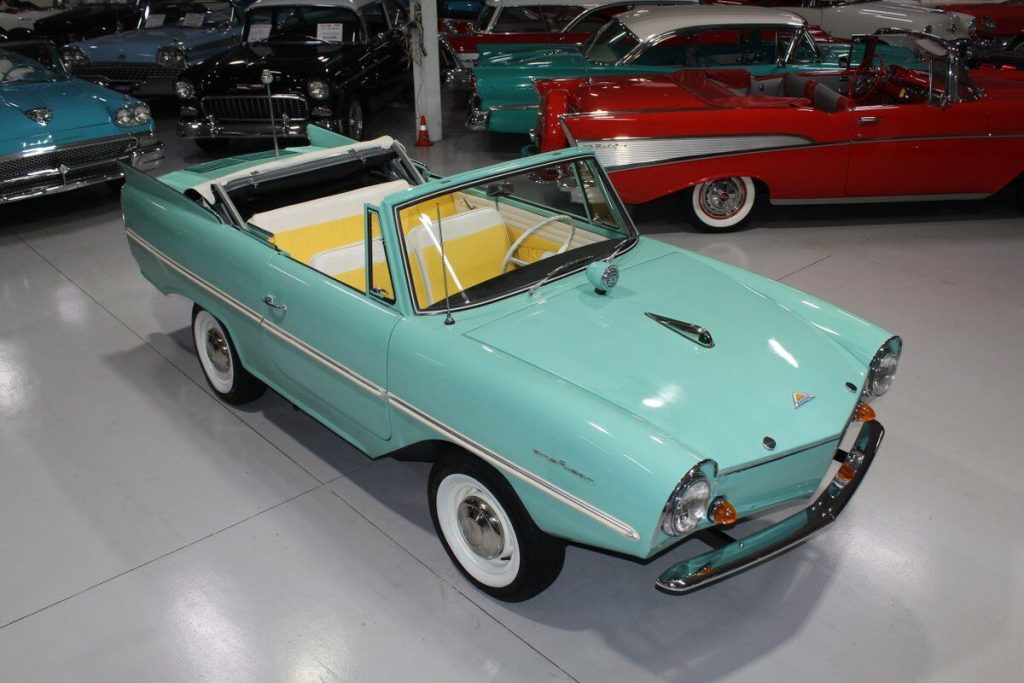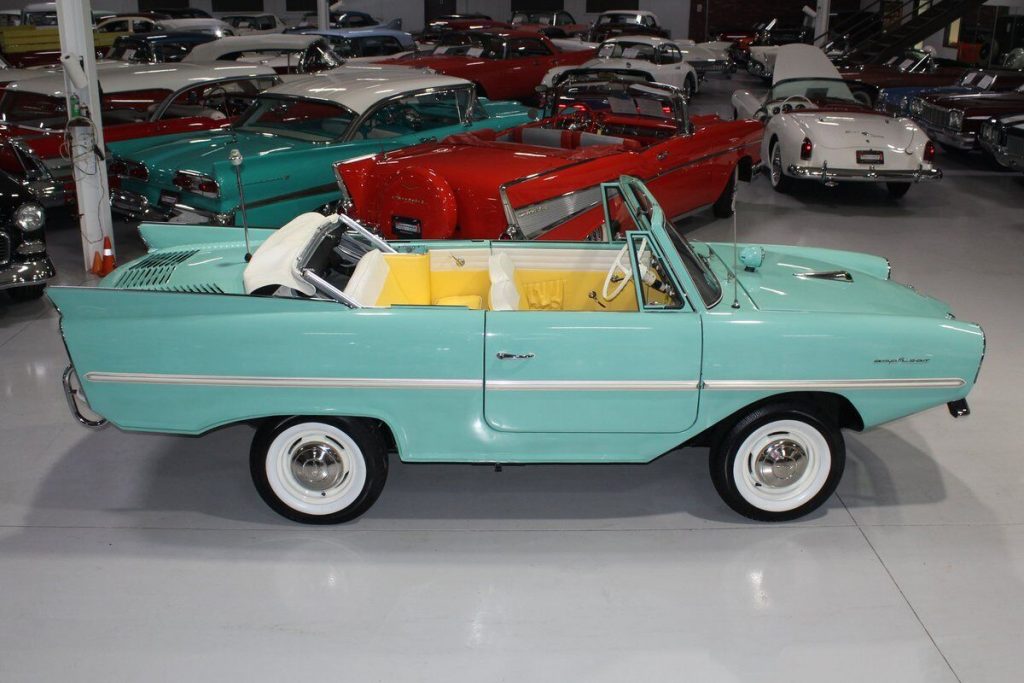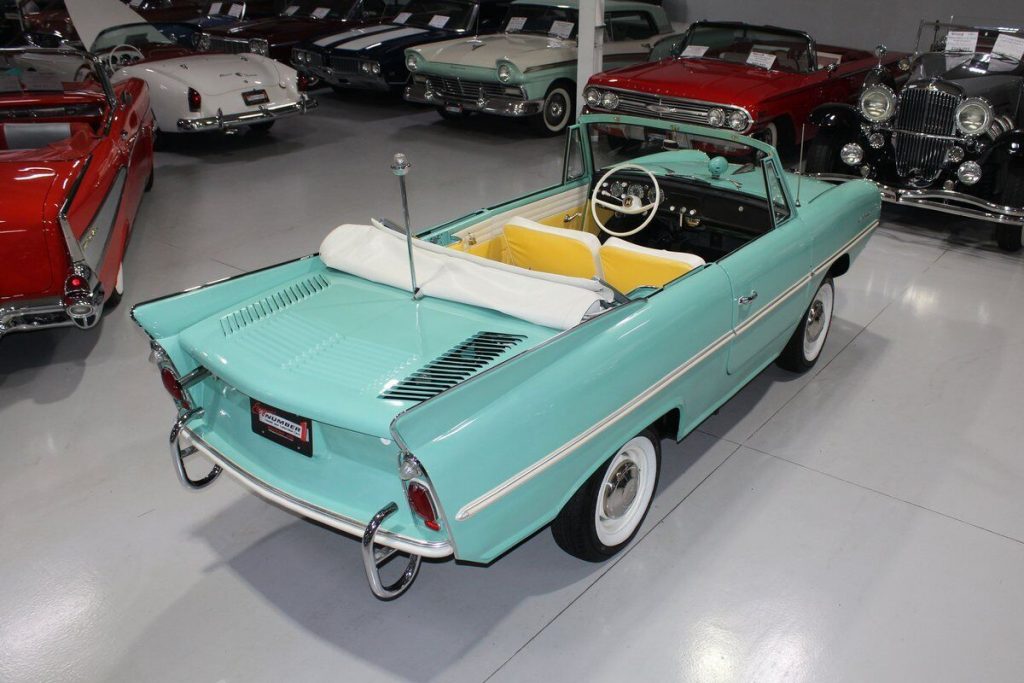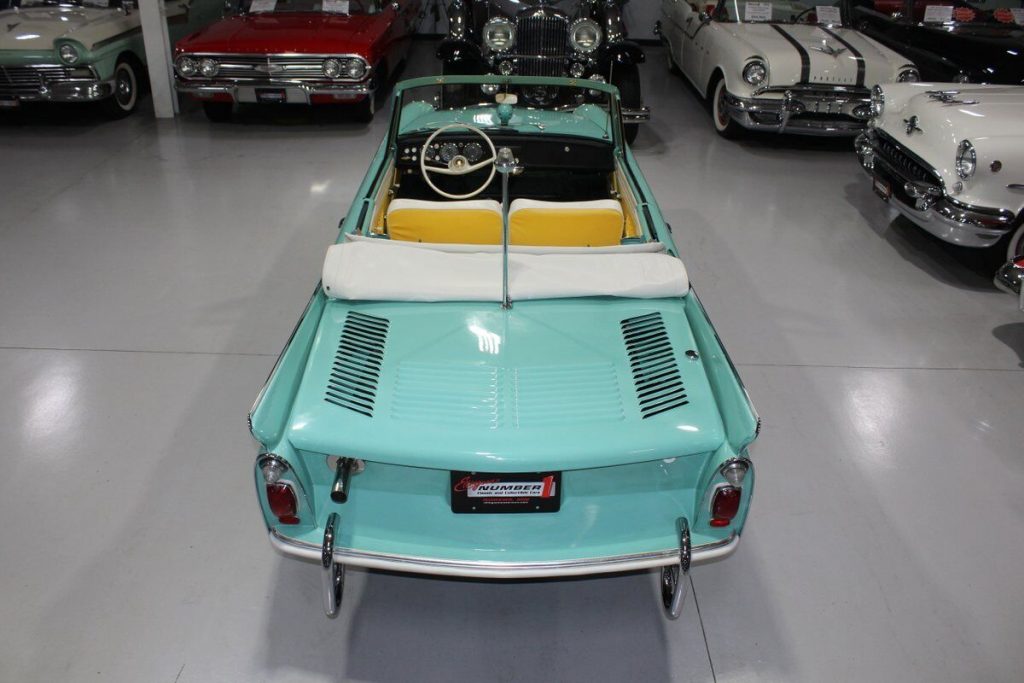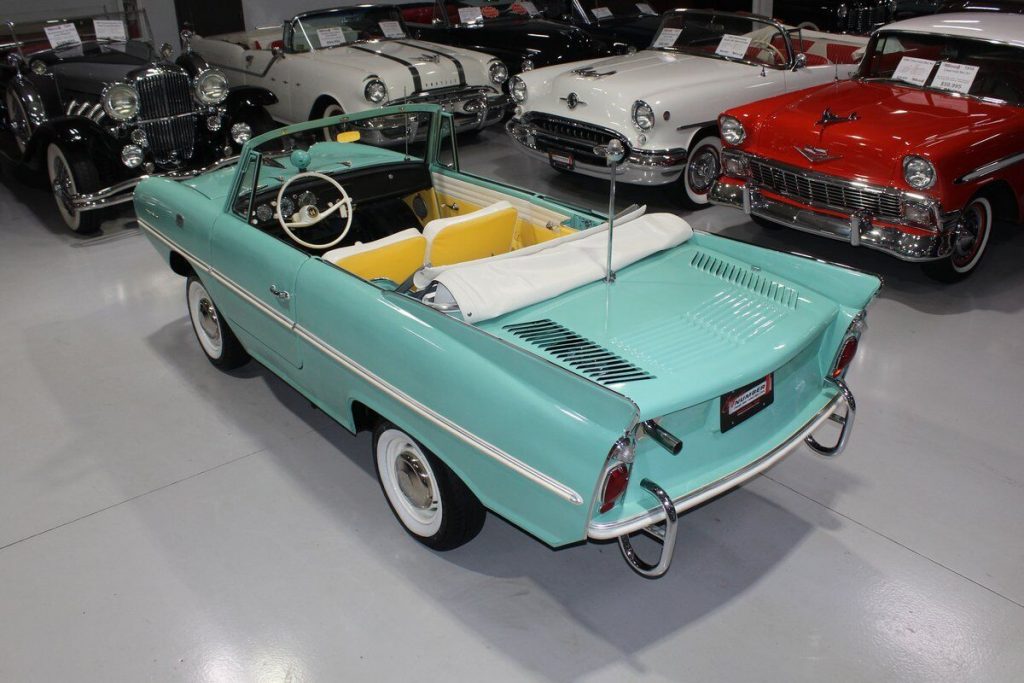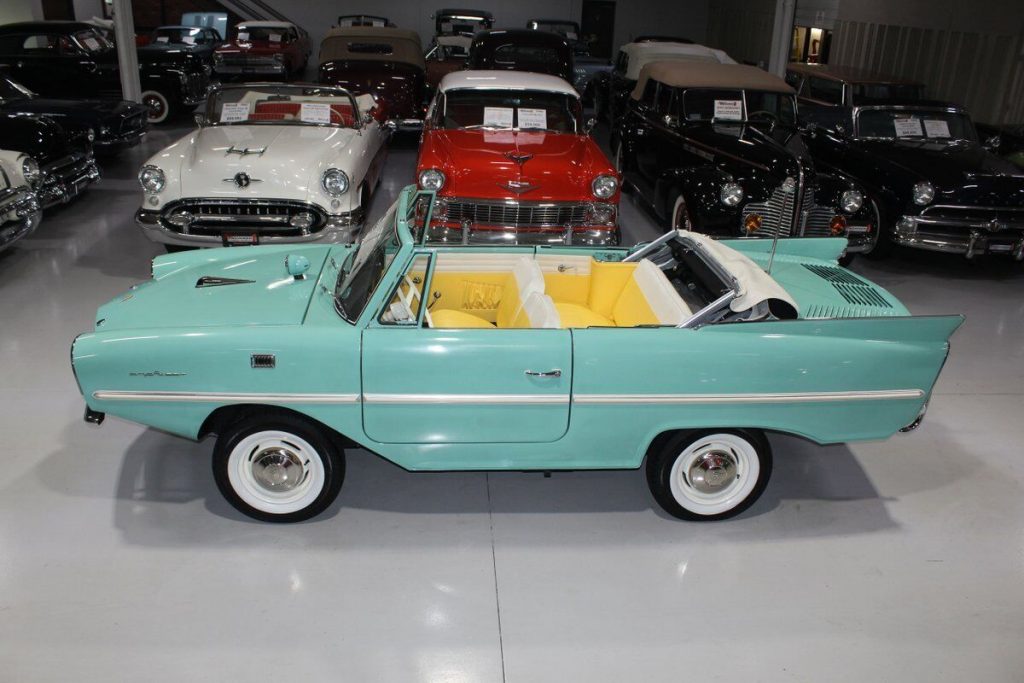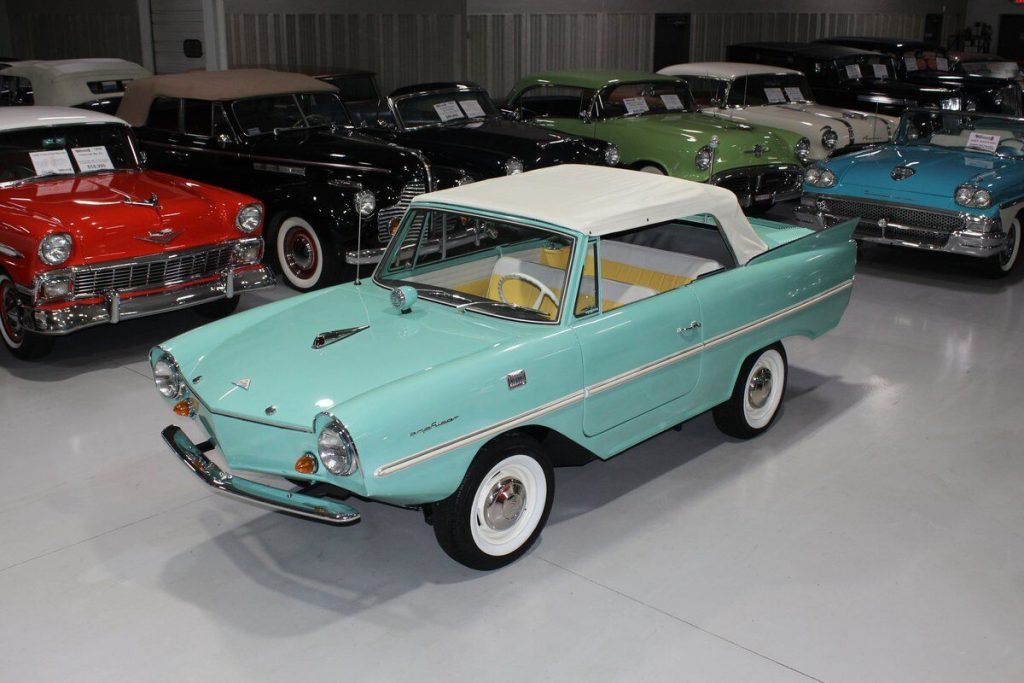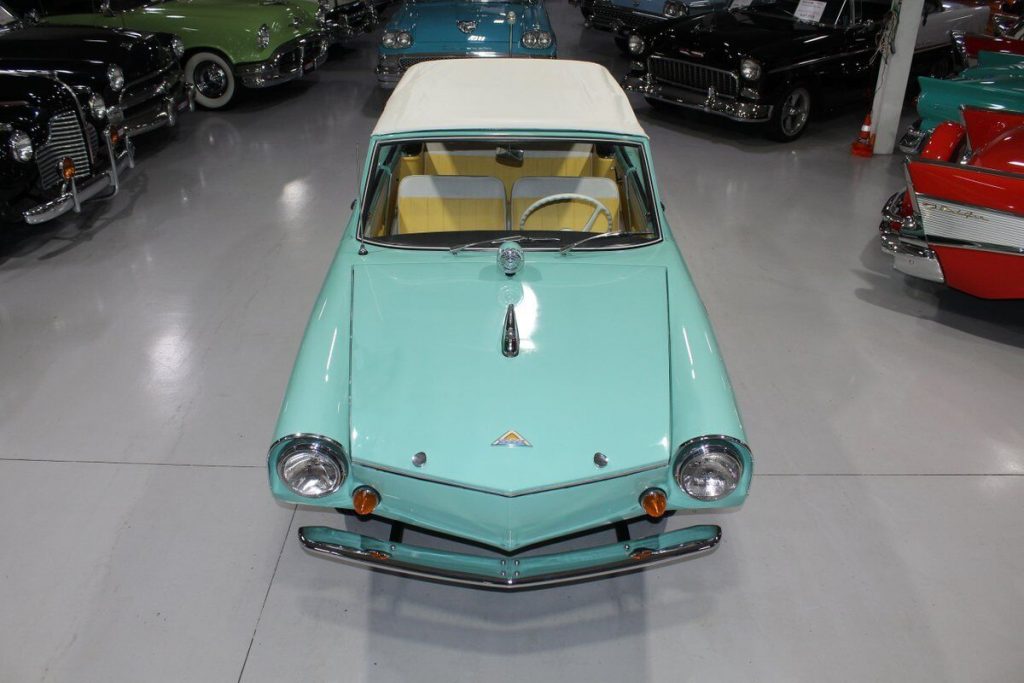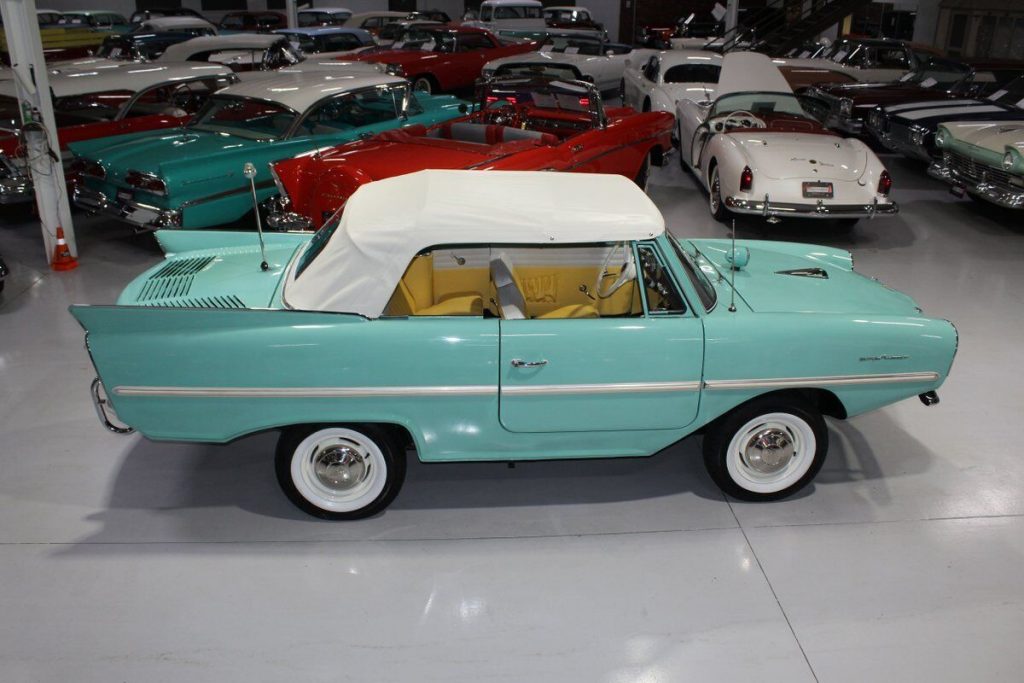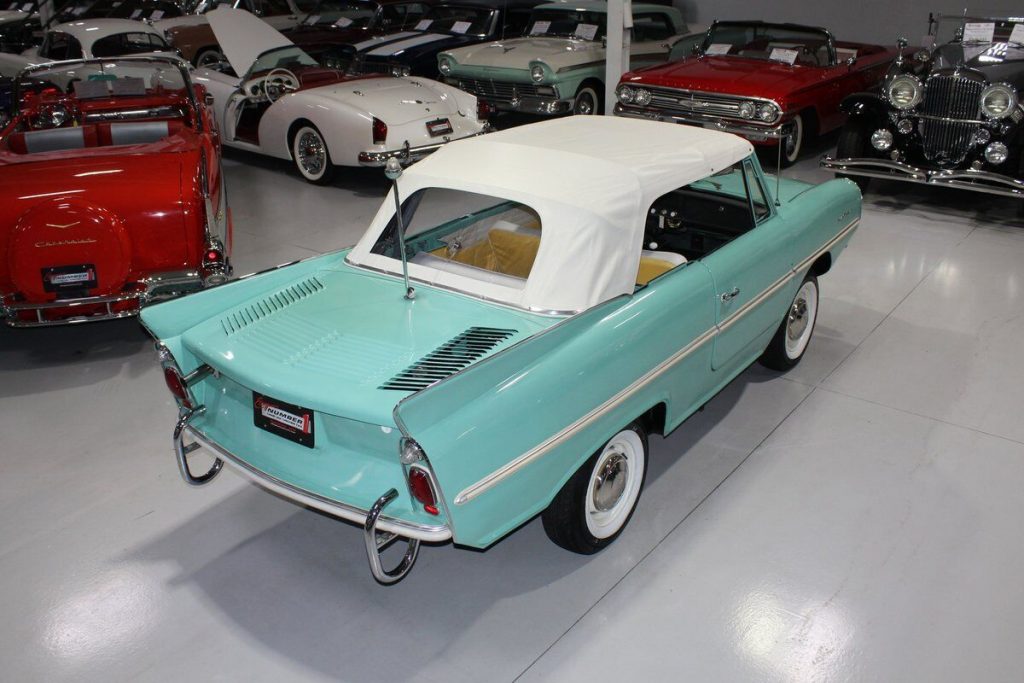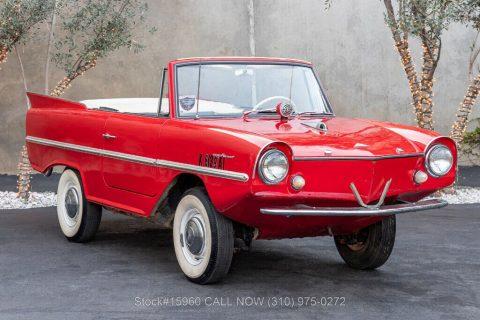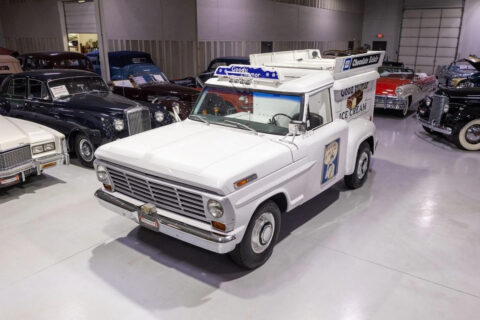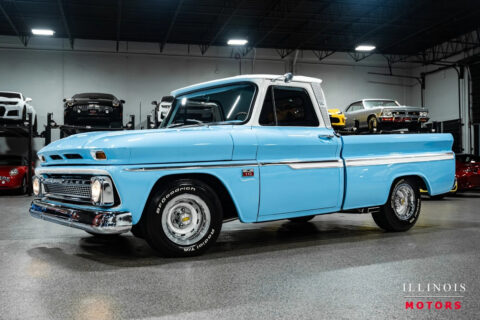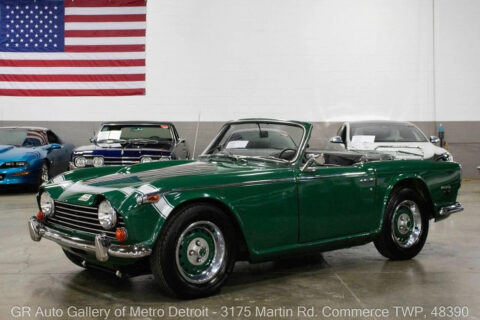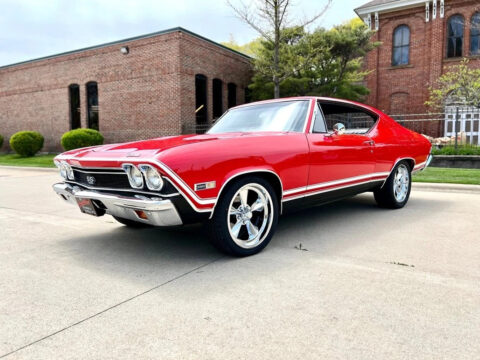This 1965 Amphicar 770 is a beautifully restored example of the iconic amphibious vehicle that the public could drive to, and into the lake on a gorgeous summer day. Is it a boat or is it a car? It’s both, it’s an Amphicar! Back in the late 50s, the idea of amphibious vehicles was not particularly novel, especially in the worlds of military and scientific applications. However, the idea of an amphibious motor vehicle for personal use was practically unheard of until a group of West German scientists and engineers reportedly spent 15 years and approximately $25 Million researching and developing the idea. Making its US debut on April 1, 1961 at the Fifth Annual International Auto Show in New York City, the Amphicar was a truly unique automobile. The production version of the Amphicar was based off a concept vehicle designed by Hans Trippel that he had actually displayed at the 1959 Geneva Auto Show. Unlike the concept car that sported a British Austin motor, the production Amphicar was sold with a British Triumph engine. The special land and sea capable transmissions were sourced from the Hermes firm in Germany, who at the time were known for providing the transmissions for another famous German auto maker, Porsche. Perhaps most significantly, the fact that the Amphicar was built on its own platform (as opposed to being built on an existing car or boat) makes this amphibious vehicle particularly extraordinary. Dubbed “the sports car that swims,” the Amphicar was touted for its ability to simply drive into water and instantly become a boat, thus being able to be transported without the need of a trailer. Additionally, the 770 model name was said to have come from the Amphicar’s ability to travel 7 MPH in the water and 70 MPH on land. Despite the Amphicar’s novel design and initial public excitement, they were only produced for a mere 7 years. A combination of weak demand and changes in the tightening EPA and DOT regulations lead to the firm’s ultimate downfall. In the 7 year run, a total of approximately 800 Amphicars were produced and of that, only about 600 were sold in the US, which makes these exceptional pieces of automotive history especially desirable and collectible today. The British-sourced 1,147 cc Overhead Valve Inline 4 Cylinder engine is paired with a single barrel Solex carburetor is mounted in the rear of this vehicle and was said to have produced 43 horsepower when new. The 1,147 CC engine is backed by a German-sourced Hermes 4 speed manual transmission that was capable of switching between land and sea driving with the flip of a switch. This Amphicar is equipped with a 12 Volt electrical system which provides an improved startup and overall electrical performance. On land, this 1965 Amphicar 770 rides on a set of radial tires on painted steel rim with wheelcovers and in the sea it is propelled via a pair of propellors underneath the vehicle towards the rear. The white vinyl convertible top is manually operated and it’s in fantastic condition. The exterior on this Amphicar has been refinished in a beautiful Fjord Green that just has a great look for such an eccentric vehicle. Superb chrome and brightwork around the exterior of this Amphicar 770 completes its exterior appearance. The interior on this Amphicar is absolutely fantastic! The front and rear bench seats, and door panels have all been beautifully reupholstered in a two-tone color scheme consisting of Yellow and White Vinyl. The dash, woodgrain floor, and steering wheel are all in wonderful condition as well and all appear to be in their stock configuration. The dash is outfitted with a 90 MPH speedometer, temperature gauge, and fuel gauge, along with a clock. An Equus temperature gauge is also mounted neatly under the dash as well. Whether you’re adding to your existing collection or you’re buying your first classic car, this 1965 Amphicar 770 would make an excellent choice. Give us a call today!
Price: Auction
More info: Listing has ended. Click to search on eBay for similar 1965 Amphicar 770 (Affiliate link)
Seller's other items: ellingsonmotorcars (Affiliate link)
Location: Rogers, Minnesota, United States


